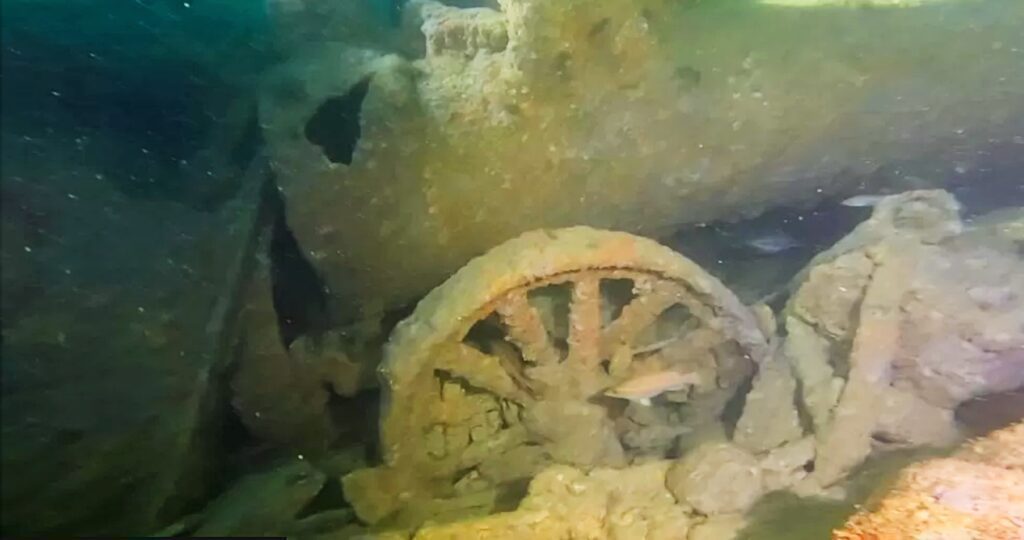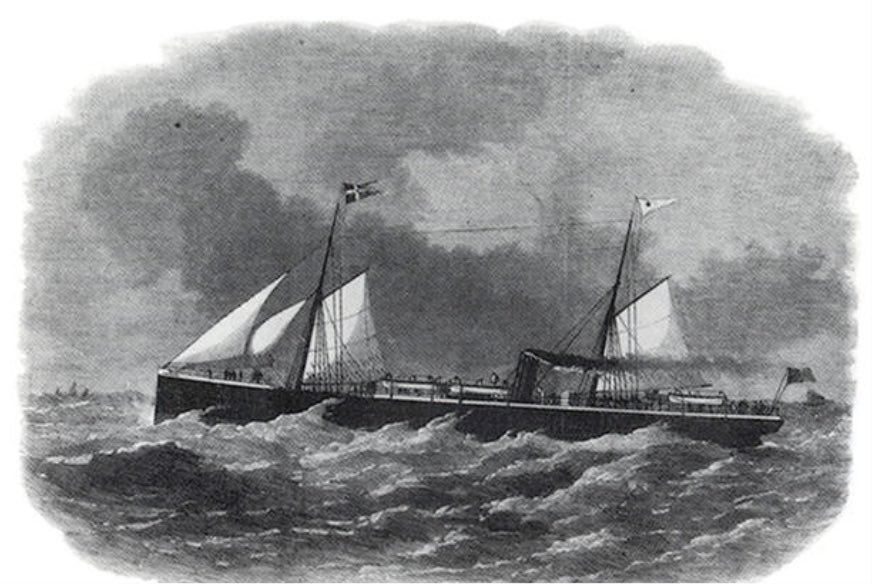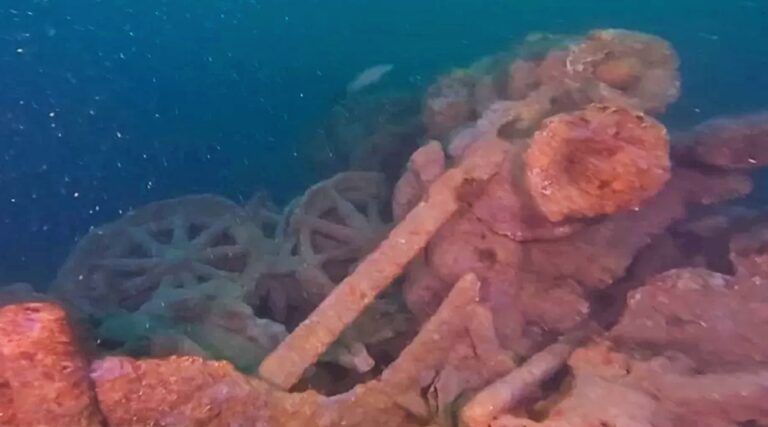Scuba divers have explored a shipwreck two miles off the Channel island of Alderney and identified it as the long-lost Victorian cargo steamship Virago. They have also given Divernet a detailed account of the dives they carried out in challenging conditions earlier this year.
The presence of a wreck had first been noted during a seabed survey in 2009 but it had remained unidentified. Alderney has an unusually powerful tidal range, with its “Race” exceeding 7 knots and limiting the number of opportunities available to the divers to get down onto the site.
Also read: Above 18m: Diving Jersey’s Bouley Bay
Built at the Earle’s shipyard in Hull in 1871, the 86m Virago had a gross tonnage of 1,809 and was part of the Wilson Line, at the time the world’s biggest privately owned steamship fleet. The ship was used to carry general cargo, initially to the Far East.

Virago was heading south from Hull laden with 1,000 tons of machinery bound for Russia’s Black Sea port of Odessa when, in foggy conditions on 3 June, 1882, she is thought to have struck a reef. She was lost with all 26 crew, including Captain John Henry Stephens.
One body was washed ashore along with four empty lifeboats that ended up either off Alderney or the French coast, but why the crew had been unable to escape in them remains a mystery.
‘Sounds bad’
The dive-team, consisting of JP Fallaize, Mat Le Maitre, Phil Warry, Paul Maindonel and Martyn Jehan, dived using as simple and streamlined an open-circuit set-up as possible, Fallaize told Divernet. “I had twin-7s 300bar twin-set with a 7-litre stage with 50% O2. We also had a 100% stage on the lazy-line at 6m.
“The tide has a 15-minute slack, and we have figured that the wreck can be dived only once a tide in the 24-hour cycle on a neap tide. We enter the water while there is still 1 knot of tide running, which requires you to turn your head a little so that the purge button isn’t pushed in! Sounds bad, but it’s not really an issue once you‘re a little deeper.”

The dive required a strict bottom-time plan, so that the divers could be back at the shot before the tide swung and turned – which happens almost immediately.
“We spent about 18 minutes on the bottom, including the descent,” said Fallaize. “On ascent, we changed from our back-gas of air to 50% at 18m. Then we got to 9m and disconnected from the shot onto our lazy-line and drifted off with the tide a mile or so to complete our deco, and then a three-minute safety stop.
“We have dived as a group for 12 years – all year round and weekly – and are very familiar with each other’s dive techniques. All our processes are the same, such as tying-in, shot-retrieval, strobes on the line, what we do in case of emergency and so on. This shipwreck is about two hours from the closest chamber, so we have to be a little more conservative – I run 30/70 conservatism.”
‘Dark and very tidal’
Fallaize said that he carried out two dives in very different conditions. “The first dive for all of us on this wreck was nice and light at 40m and quite pleasant. It was a 10-minute dive due to us not knowing what the tide would do.” The second dive, later in the season, he described as “dark and very tidal”.
“With this wreck it really matters to get in the water at the correct time and you have to be ready and have your gear checked in plenty of time. I missed the second-ever dive on the wreck and was told that it was horrendous – the boys felt like flags on the ascent and meeting the large buff at 6m submerged. Once unhooked and onto the lazy-line all was OK as they drifted away, but the buff remained under water.
“We left a shot in for our last dive, and arriving on site the buoy had appeared to have gone. We steamed around for a bit to find the wreck on the depth-sounder and noticed that it was about 4ft below the surface. As the tide slackened it popped to the surface again – it was like a scene from Jaws as we drifted down past it as white water streamed from the buff for some 2m behind it.”

The team had been aware of the wreck since the 2009 survey. A Jersey diver had visited it after being involved in the survey – and his description of the dive suggested that it was not one he would be keen to repeat.
“I’m quite sure he didn’t explore the shipwreck because he never mentioned any cargo, especially the five large stationary steam boilers,” Fallaize told Divernet. They had seen many wheels, grindstones and at present unidentifiable items. “There were no fish or crabs on the wreck and some of it has been polished almost clean from the tide-grit blasting it.”
Granite seabed
The Virago was identified with the help of local wreck-researcher Richard Keen, whose past discoveries include the “Asterix” Gallo-Roman ship’s timbers found in St Peter Port, Guernsey in the 1980s.
Fallaize says the Virago’s location explains why it remained hidden for 140 years. “It’s deep enough and the seabed is granite, so there has been no trawling in the area. It can be dived only a handful of times a year when the tides are good, weather is fine and the swell is small.”
The team have had meetings with the Receiver of Wreck in Alderney and yesterday (5 November) gave talks about it to the Alderney people, including Guernsey governor Lt-General Richard Cripwell and Alderney‘s president William Tate.
Having officially handed over their knowledge of the wreck, the team have a 27-minute video that will be posted later this month on Fallaize’s YouTube channel Bailiwick of Guernsey Shipwrecks and Le Maitre’s channel Channel Island Diving.
Although the Wilson Line had a relatively good record for taking safety precautions, the loss of the Virago was one used at the time by people campaigning for a maximum load-line to be painted on ships’ hulls to avoid the danger of overloading. The “Plimsoll Line” passed into law 12 years after the sinking of the Virago.
Also on Divernet: Wreck Tour 143: The Schokland


49°41.840’N 2°8.851’W